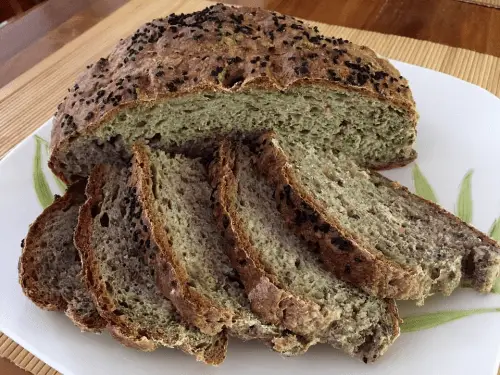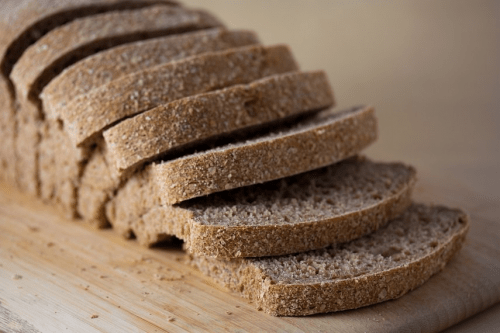Bread is a staple food in almost every part of the world. You can create quick and easy meals as well as snacks on the go with just bread and some sort of topping. There are also different types of bread available to purchase. In this article, we will concentrate on what are considered to be the healthier types of bread. We’ll discuss the difference between whole grain bread, whole wheat bread, and multigrain bread.
Summary Table
| Whole Grain Bread |
Whole Wheat Bread |
Multigrain Bread |
| Made with one type of grain or a combination of different grains that are fully intact (may include wheat, barley, oats, cornmeal, flax, millet, and buckwheat) | Made with wheat grains that are fully intact. The bran, germ and endosperm of the wheat grain are included. | Made with multiple types of grains |
| May or may not be made with 100% whole grains | 100% whole wheat grain | Unless otherwise specified, none of the ingredients are whole grains. |
Definitions

Whole grain bread is made with any one or a combination of grains that may include wheat, cornmeal, barley, flax, millet, buckwheat, and oats. But this does not necessarily mean that the grains used are 100% whole grains.
Some of these grains may have been processed and therefore stripped of their fiber and other natural nutrients. “Whole grain” means that all three parts of the grain have been left intact. It would be best to check the ingredients list on the back label to make sure you know whether your bread contains 100% whole grains or not.

Whole wheat bread is made with whole wheat grains. By “whole wheat” we mean that the wheat grain must still have all three parts, namely: the endosperm (contains the starch), the bran (has fiber, B vitamins, and antioxidants), and the germ (has protein, minerals, and healthy fats).

Multigrain bread is made with more than one type of grain. Unless otherwise indicated in the ingredients label, there is no guarantee that the grains used are 100% whole grains. This type of bread can still be made from white flour with several grains added to it.
Whole Grain Bread vs Whole Wheat Bread vs Multigrain Bread
The main differences between whole grain bread, whole wheat bread, and multigrain bread are in the quality and quantity of grains used in making the bread. Whole grain bread is usually made with one type or a combination of different types of grains. They may or may not be made with 100% whole grains. Whole wheat bread, on the other hand, is made of 100% whole wheat grains. Lastly, multigrain bread is made with more than one type of grain but there is no guarantee that the grains used are 100% whole grain.
All three types are thought to have an “earthy” flavor, which is not so popular among children.
Their crusts are usually covered in seeds and grains. These types of bread are favored by adults who prefer to have healthier diets. Bread with 100% whole grains, whether it be wheat or other types of grains, are rich in nutrients like B vitamins, copper, zinc, iron, manganese, and magnesium. Eating whole grain bread helps lower the risk of heart disease, stroke, and diabetes since it has lots of omega-3 fatty acids, protein, and fiber.





